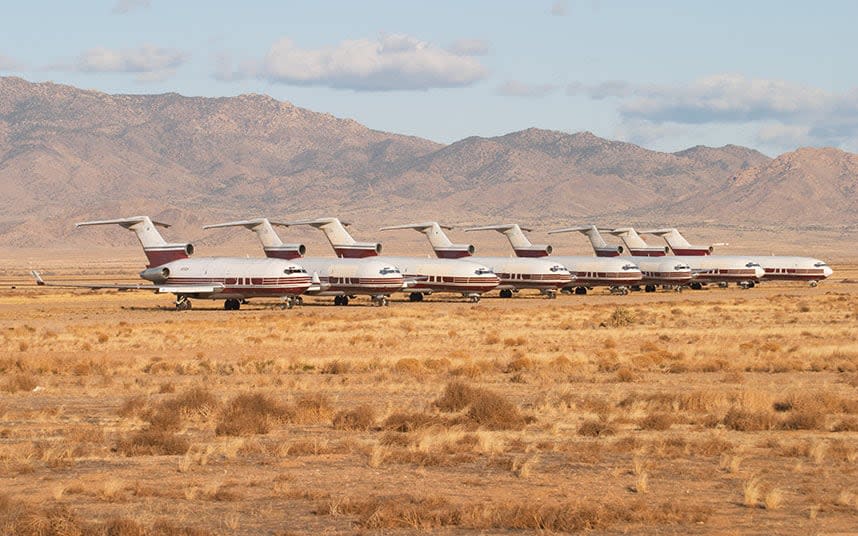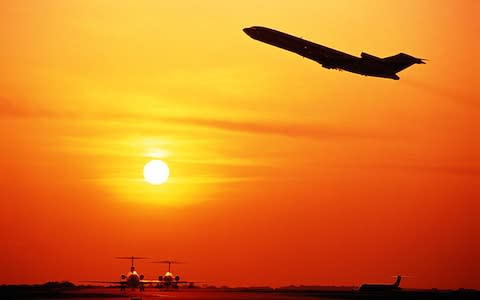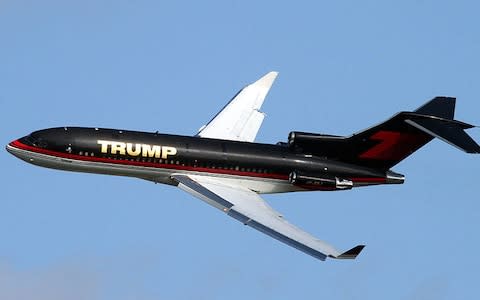Farewell to the 727, the ‘earth-trembling’ workhorse that brought air travel to millions

One of the aircraft that introduced the fundamentals of modern comfort and convenience to millions of travellers has flown its last passenger service.
The Boeing 727 might not have been responsible for the dawn of the jet age, but its record-breaking popularity in the Sixties and Seventies was testament to the seachange it helped force when it became the stalwart of some of the world’s largest airlines.
After its 1963 debut, it was the first Boeing commercial plane to sell more than 1,000 units - and the manufacturer’s only trijet.
“What a transformation,” Dan Hagedorn, curator at Seattle’s Museum of Flight, told the Seattle Times, of the plane’s passenger experience. “It was like going to the moon - it was that different for the travelling public.”
At a time when those flying for the first time did so either in large jets (such as the 707) or smaller propellor aircraft, the 727, capable of carrying up to 189 passengers, was the first jet airliner to bring speed, style and comfort to mid-sized towns and cities, flying in and out of smaller airports with shorter runways.

Favoured by US airlines to serve its domestic routes, though used in Europe by the likes of Alitalia, Lufthansa and Air France, the three-engine aircraft was designed with shorter runways in mind and to open up new short- and medium-haul commuter markets. Bob Bogash, a former Boeing engineer, said of the 727: “It was a big leap forward.”
Its story is now over, with the last 727 in commercial service flying its final scheduled passenger flight earlier this month. The 38-year-old Boeing 727-200, owned by Iran Aseman Airlines, touched down in Tehran ahead of its retirement, two hours after taking off from Zahedan.
In recent years the aircraft, which in its heyday would have featured tiny (by today’s standards) overhead bins, ashtrays in arm rests and unwieldy drinks trolleys (likely with a free and well-stocked bar), has become harder to find, with fewer and fewer carriers flying it. Its use became mainly reserved for cargo operators, militaries and private jets..
With 1,832 aircraft sold, and millions of passengers carried, the 727 had become more and more expensive to maintain and run, its gas-guzzling trio of engines inefficient compared to today’s twin-engine jets.

Those three engines were famously loud, with many of the aircraft flown in recent years fitted with “hush kits” to allow them to meet noise regulations. Even then, in 2010, a number of Australian airports banned the aircraft altogether from their runways.
Writing for Disciples of Flight, pilot and author Erika Armstrong said the 727’s Pratt and Whitney engines “made the earth tremble, set off car alarms and triggered many noise abatement fines”.
Despite the racket, pilots enjoyed flying the 727. “Oh, I loved it,” said Captain Molly Flanagan, at the ceremony for retiring the first ever model in 2016. “It was great. It was fast, sleek and challenging to fly.”
But perhaps the world’s most famous fan of the 727 was Donald Trump, long before he was president, who had one as his private jet before upgrading in 2009 to a larger 757. Another high-profile user, in a rather different respect, was the infamous DB Cooper.

As we’ve heard, the 727 was born to serve smaller cities and destinations not yet covered by the nascent jet industry. To do this, it was developed to be relatively self-sufficient, in such a way that it did not need ground facilities. It had its own auxiliary power unit, for example, which allowed electrical systems and air conditioning to run without the need for a ground supply.
Another of its quirks was its built-in staircase at its aft, negating the need for airport steps, but also allowing, at first, an escape route. Enter DB Cooper.
It was Cooper (or so he is known) who hijacked a 727 in 1971 and, after extorting $200,000 ($1.2m today) in ransom money, had the pilots fly the plane at 10,000 feet before locking the crew on the flight deck, lowering the back staircase and parachuting into history, never to be found.
Cooper’s escapes - and the attempts of dozens more - led to the introduction of the Cooper vane that prevented the staircase from being opened in flight.
The rear stairs also made the 727 the airline of choice for the CIA when it came to dropping agents and supplies behind enemy lines in the Vietnam War.

It was also an 727 that featured in 2012 TV experiment, The Plane Crash, on Channel 4. In the programme a former Singapore Airlines aircraft was flown by remote control before being deliberately crashed in Mexico – not a positive indicator of a plane’s place in the market.
And so, after a colourful history, the 727 is all-but laid to rest as the world enters a new era of aviation and the public loses touch with another aircraft that, just 60 years ago, introduced flying to the world.
Five more aircraft disappearing from the skies
Boeing 747
The 747 will remain in the sky for some time to come – a remarkable 1,547 have been built and delivered since 1966 - including five this year, all bound for logistics behemoth UPS - and they remain an important part of countless airline fleets, including that of British Airways, which owns 36 jumbo jets (more than any other carrier bar Atlas Air), and Virgin Atlantic, which has eight. A little over 500 are still in service and the oldest “active” 747, according to the website Airfleets.net, made its maiden flight on July 13, 1969 (exactly one week before man first set foot on the moon) and belongs to Iran’s Caspian Airlines.
But they are slowly being phased out. BA has retired five in the last 12 months and said the model will be gone from its hangers by 2024. Last year United waved goodbye to its final 747, with a farewell flight from San Francisco to Honolulu (recreating the route of its first 747 service in 1970), as did its US rival Delta. KLM has binned two in 2018 (last year we reported on the final flight of one of its jumbos, registration PH-BFR, which was greeted on the runway by a herd of deer). Before long this iconic aircraft, the world’s biggest passenger plane for 37 years, will be the preserve of the planet’s smaller airlines and cargo companies.

Fokker 100/70
The largest aircraft built by Dutch manufacturer Fokker before it declared bankruptcy in 1996, the Fokker 100 and its smaller sibling, the Fokker 70, are rapidly disappearing from the skies. KLM, the world’s oldest airline and for decades its biggest customer, retired its final Fokker in October 2017, and only around a dozen of either model are still flying in Europe (Helvetic Airways, based in Switzerland, is the continent’s biggest Fokker operator, with five). Virgin Australia Regional Airlines still uses the Fokker 100 (it has 14), but is planning to replace them with ATRs. Other airlines still flying the Dutch aircraft include Iran Air (3), Papua New Guinea's Air Niugini (7), and Air Panama (5).
McDonnell Douglas DC-9
McDonnell Douglas has been defunct since 1997, but its aircraft can still be seen, though in ever decreasing numbers. Almost 1,000 DC-9s were built, but only 36 are still in the sky, almost all of which are running cargo services.
Until this year passengers with LASER Airlines, based in Venezuela, could board a DC-9. But now it only operates the equally venerable MD-80 (more on which below).
Fly SAX, based in Kenya, still has one, however. It is 52 years old and can still be seen hopping between the country’s airports.
Ilyushin Il-18
This turboprop was one of the most iconic Soviet airliners - at a time when the sprawling country’s questionable air safety record was something of a running joke - but has been out of production since 1985. In the last five years it has disappeared from the fleets of Aeroflot and Rossiya Airlines, as well as a clutch of Cuban airlines. In fact, our research suggests that only two carriers still fly them. Sri Lanka’s FitsAir, which has one for cargo services, and Air Koryo, North Korea’s national airline, often rated the world’s worst, which also owns one, but only uses it for domestic services.
McDonnell Douglas DC-3
In 2017 Telegraph Travel went on the hunt for the oldest passenger plane still in service. We thought we’d found it, but were subsequently pointed in the direction of Buffalo Airlines, a family-run Canadian carrier. It owns six DC-3s, a model that has been out of service since 1950. Scheduled passenger flights have been suspended, but they are available for charter services.

 Yahoo News
Yahoo News 
